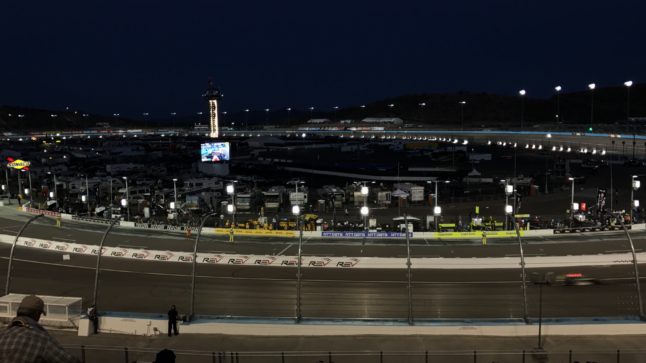Like a bear emerging from hibernation, so comes the 2018 Indycar season. Well, not exactly like a bear, because unlike a bear Indycar will not eat your face. It might eat your waking hours with the compulsion to read blogs, watch driver twitter banter, or just rerun the latest race in your DVR over and over. But never your face.
Your humble host has started the year as he has for the last few seasons, by attending the February open testing at Phoenix International, err, ISM Raceway. I’m sure most of you have read enough about that test, so I’ll just summarize.
Yes, the new Universal Aero Kit (UAK18) looks spectacularly better than the previous kits.
Yes, the new LED panels on the car are going to open up a whole new world of possibilities.
Yes, tire degradation issues might keep the Phoenix race from experiencing a significant number of overtakes. Maybe the Tire Dragon thing can save us.
But one thing I didn’t see discussed much was how the reduction in downforce contributed having nearly all of the cars complete the testing intact. I mean, this is a short oval, where cars snap into a spin and launch into the wall at seemingly regular intervals. Before 2018 I don’t think I’ve ever seen a clean practice session at the Phoenix mile, and yet there was really only one car that suffered any damage and that was the one driven by Scott Dixon of all people.
Instead of carnage what I and others did see were lots of slower occurring events, which allowed the drivers an actual chance to correct. I recall Mattheus Leist getting turned around a few times and being able to keep off the wall, while Alexander Rossi and others had similar moment as well. But all of them, save Dixon, emerged without any damage to the shiny new body kits.
I realize this was just two days on a short oval, but what I saw from the new cars was that the reduction in downforce seemed to result in two significant things: the cars seem to wiggle under the drivers a bit more, but they don’t snap away from their control as easily as they had in the past. If that’s going to hold true on most tracks, we could see a very different battle at the top of the points standings this season.
What I mean is that some drivers like a nice precise car that has maybe a little push/understeer, and if they get that setup they can run rings around everyone. And then there are others who, even if the car is loose, can still manage to stand on the gas and drive aggressively with some success. I think this new kit could substantially benefit the latter group.
I’m not in the prediction business, but I will drop a few names for consideration: Power, Rahal, Hunter-Reay, Kanaan, Sato. These are drivers that have had success in the past by driving in the marbles, on the unpreferred line of a turn, and still holding on to their car and pulling off the pass. This new car could create a lot more of those kinds of feelings behind the wheel, and for that reason I think each of the drivers I mentioned will have a more successful year than last.
Then again, I still wouldn’t bet against a Josef Newgarden repeat. At any rate, it’s nice to finally see some racing again!


Laura
March 16, 2018 at 8:35pmThank you so much for sharing.